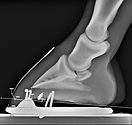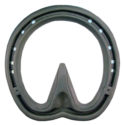Advertise Follow Us
Anatomy
Farriers and veterinarians share thoughts on the diagnosis and treatment of this condition
Read More
Digital Options To Improve Your Practice
Farriers offer advice on using technology to expand knowledge for both you and your clients
Read More
Measurement Of The Hoof-Pastern Axis For Foot Management
The benefit of this system in the consistency and measurability of the hoof-pastern axis
Read More
Does Grooving Benefit Quarter Cracks?
Hall Of Fame farrier Bob Pethick challenges its effects on heel displacement
Read More
Research Journal: December 2016
The information, ideas and opinions expressed are those of the author and do not necessarily represent those of the United States Department of Agriculture.
Read More
The Ideal Hoof Angle Depends On The Horse
No single number should dictate how all horses are trimmed
Read More












